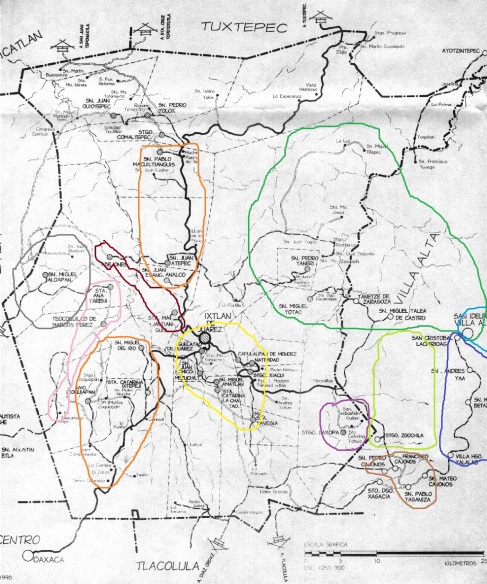It seems like every trip to Oaxaca, some particular Zapotec word or phrase stands out and becomes the Official Word of the Trip. In 2000, it was gwendi ‘a lot’ which can often be shifted to the front of the sentence. In 2001, it was scanna, akin to rhetorical ‘pues’ and ‘then’, which hangs out at the end of the sentence. In the winter of 2004-05 (I think), I picked up on eu?, a response my wife suddenly began saying when her name was called, and which I noticed others doing, too. On that one, I’m not sure if it is a Zapotec or Spanish thing.
This trip there hasn’t been a clear-cut winner, but I have suddenly had several serendipitous encounters with =ttsa’, a clitic adverb meaning ‘sometime’. For something I am currently working on, I asked one of my sisters-in-law to use the word eguittia ‘will play again’ in a sentence, and she came up with the following:
- Gwayu’uttsa’laasayà’ eguittiayà’.
I was momentarily stumped. Although I didn’t immediately realize it, I knew the verb gwayu’ulaasayà’ ‘I would like’, but the =ttsa’ in the middle of it was throwing me off. Then, she explained it to me: it’s ‘sometime’. The sentence means ‘I would like to play again sometime.’ Ttsa’ is an adverb, and like other adverbs (=ru ‘more/still’, =ní ‘fast’, =gwa ‘also’, etc.) it follows the verb, before the subject pronoun (=yà’ ‘I’ in this case). And when there is a compound verb, with an incorporated noun like laasa, which is something like ‘heart/self’, the adverb may, and often does, come before it, immediately after the verb root. Yay! Problem solved.
And just to prove the point, she turned around and used =ttsa’ a different way in her next sentence:
- Gwayu’uttsa’laasa’yà’ eyecchayà’ attsa’ tari’á. ‘I would like to return to the US another time.’
Here, =ttsa’ is attached to or fused with a- or attu, which means ‘another’.
Then, just last night, my other sister-in-law, hit me with another instance of =ttsa’ completely out of the blue (she hadn’t been there when we previously discussing it). I told her xiaba ‘maybe’ in response to something, and she told me that if I wanted to make the possibility seem very remote, I could say xiattsa’ba! I was ready this time. That’s =ttsa’ attached to =xia ‘maybe’, itself another adverb, and before =ba, an emphatic element, required for xiaba to stand as an independent word, not attached to the verb. And the combined xiattsa’ba would be something like ‘maybe sometime’ or perhaps even better in English would ‘maybe some day’, as in Xiattsa’ba iteeliintè’ ttu ttu tiisa’ què’ xtiisa’cayé, ‘Maybe some day I will understand every word of their language.’



